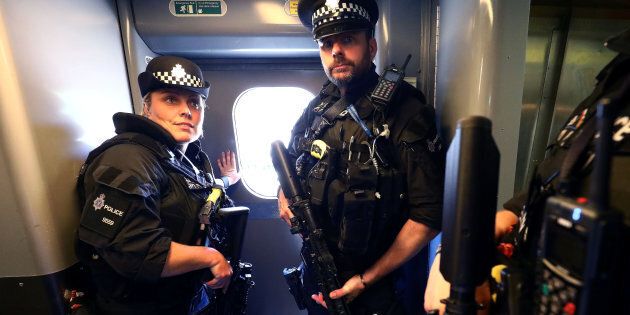
While we continue to mourn the unnecessary loss of eight lives in the London Bridge attack, its lasting impacts on counter-terrorism policy are nowhere near being fully realised. For those politicians and intelligence officers charged with assessing and setting national terrorist threat warnings this attack may be a death knell for their advisory systems. Or it may create the much needed opportunity to hit the policy reset button.
On 23 May, following the devastating Manchester bombing, UK Prime Minister Theresa May raised her country's terrorism threat level from severe to critical -- an attack was expected 'imminently'. Then, on 27 May, the UK PM dropped the threat level back to severe -- an attack was 'highly likely'. Only a week later the London Bridge attack resulted in an all-new tragedy.
There should be no doubt that, in time, May's decision to drop the UK's terrorism threat level so soon after the Manchester attack will be subject to further detailed analysis and review. Of course, hindsight is a wonderfully helpful perspective when passing judgment on those with the responsibility for complex decision making.
Arguably this review, and its associated public commentary, will indirectly or subconsciously contribute to the stagnation of official alert levels. Put simply, if you raise the national threat level and no threat occurs you may not be damned, but if you drop the level and an attack occurs soon after, there will be no saving you. This will only serve to accelerate the growing terrorism threat fatigue felt in communities across the world and in doing so further reduce the effectiveness of these systems. Australia will not be immune from such effects.
Any change to the threat warning system will need to do more than tinker with definitions, or add extra levels.
In early September 2014, Australia's National Terrorism Public Alert System was set at medium -- a terrorist attack 'could occur'. ASIO's Director-General at the time, David Irvine, faced growing evidence that despite the efforts of ASIO, the Australian Federal Police and border officials, the domestic terrorism threat was growing in terms of the capability and intent of would-be attackers.
The decision to recommend a rise in the threat level would have weighted heavily on Irvine. By late September 2014, he raised the level to likely -- a terrorist attack is 'likely'. Since then, the overall threat level has remained unchanged in Australia, although the government has introduced a new system -- the National Terrorism Threat Advisory System, under which 'likely' has become 'probable'.
The Australian Government, like those in Europe and America, has zero tolerance for failure when it comes to countering terrorism. In this risk averse environment, if you raise the national terrorism threat level, political risks make lowering it a later date difficult, if not impossible.
This is a point not lost on Irvine during his 2014 deliberations. The recent attacks in the UK will only serve to make governments even more risk averse.
Regardless, now is an appropriate time for Australia's policymakers to review and further develop our national terrorism threat warning system. The key focus of such a review must be on addressing terrorism threat fatigue so that the future system has greater meaning for the communities it serves.
Any change to the threat warning system will need to do more than tinker with definitions, or add extra levels. Instead, a review ought to consider how to make the future system more focused on factors such as location and events. Differentiating the level of threat between the rural town of Emerald in Queensland and Sydney, New South Wales, would be a good start. Similarly, affording our future terrorism threat warning system the ability to differentiate the threat in a location holding a major event, for a prescribed period, would be equally valuable.
The Department of Foreign Affairs and Trade operates Smart Traveller as a means to communicate threat and countermeasure advice to Australians travelling overseas. This model, with its more detailed country specific advisory system presents as a possible alternative approach to our domestic terrorism threat warning system.
With a Smart Traveller-type model, our government could then provide appropriate geographic-based threat assessments. It could also consider offering more specific advice on countermeasures that the public should be considering. This kind of approach, could answer one of the primary questions coming from the general public on terrorism in Australia: 'What should I do if....?'
ALSO ON HUFFPOST AUSTRALIA